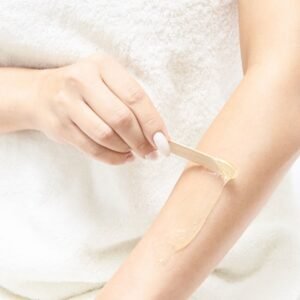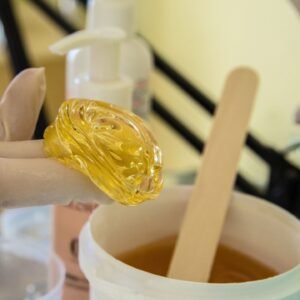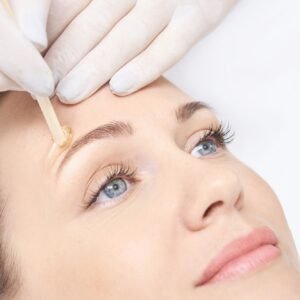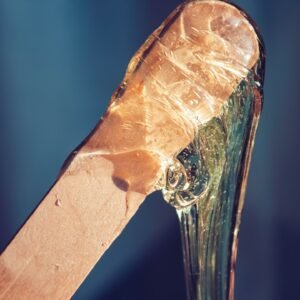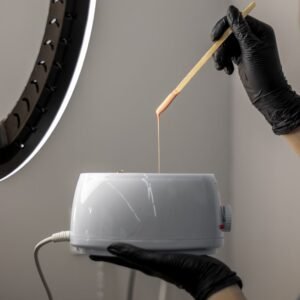How to Use Sugaring Paste for Hair Removal

Sugaring paste offers a natural and efficient way to remove unwanted hair, leaving your skin smooth for weeks. Unlike conventional waxing, it relies on a simple blend of sugar, lemon juice, and water, making it a preferred choice for those seeking a milder alternative. This guide will walk you through every step of the process, from preparation to aftercare, so you can confidently use sugaring paste for hair removal.
Table of Contents
- Preparation Before Using Sugaring Paste
- How to Apply Sugaring Paste
- How to Remove the Sugaring Paste
- Aftercare Tips
- Frequently Asked Questions
- What is sugaring paste, and how does it differ from waxing?
- How long does the hair need to be for sugaring to work effectively?
- What steps should I follow to prepare my skin for sugaring?
- What should I avoid after using sugaring paste?
- How do I remove leftover sugaring paste from my skin?
Preparation Before Using Sugaring Paste
Preparation is essential to achieve the best outcome with sugaring paste. Start by ensuring your hair length is around 1/4 inch—this is ideal for the paste to grip the hair effectively. If your hair is shorter, it may not adhere well, while longer hair can make the process more uncomfortable.
Exfoliate Your Skin: One day before your session, gently exfoliate the area you intend to treat. This removes dead skin cells, reduces the chances of ingrown hairs, and ensures the paste adheres better to the hair.
Clean and Dry the Area: On the day of treatment, thoroughly wash the area to remove any oils, lotions, or sweat. Dry the skin completely, as moisture can prevent the paste from sticking properly.
Patch Test for Sensitivity: If you’re new to sugaring paste, test a small amount on a less visible area to check for any allergic reactions or skin sensitivity.
How to Apply Sugaring Paste
Applying sugaring paste correctly takes some practice, but following these steps will help you get it right:
Warm the Paste: If the paste is too firm, warm it slightly by kneading it in your hands or placing the container in warm water. Ensure it stays pliable but doesn’t become too runny.
Apply Against Hair Growth: Scoop a small amount of paste and spread it onto the skin in the opposite direction of hair growth. Use your fingers or a spatula to create a thick, even layer.
Press Firmly: Press the paste firmly onto the skin, ensuring it adheres well to the hair.
How to Remove the Sugaring Paste
The removal process is where the actual hair extraction happens. Using the right technique is key to minimizing discomfort and maximizing results:
Flick Off in Quick Motions: Hold your skin taut with one hand and use the other to flick the paste off in the direction of hair growth. This minimizes irritation and ensures the hair is removed from the root.
Reapply if Necessary: If some hairs are left behind, reapply the paste and repeat the process. Avoid treating the same spot multiple times to prevent irritation.
Clean Residue: After finishing, rinse the area with lukewarm water to remove any leftover paste.
Aftercare Tips
Taking care of your skin post-treatment is crucial for maintaining smooth and healthy results. Follow these tips for optimal aftercare:
Soothe Your Skin: Use a gentle, fragrance-free moisturizer or aloe vera gel to calm any redness or irritation. Avoid products with alcohol or strong scents, as they can aggravate the skin.
Steer Clear of Heat and Sweat: For the next 24 hours, avoid hot showers, saunas, or vigorous activities that may cause sweating, as this can irritate freshly treated skin.
Regular Exfoliation: After 48 hours, exfoliate the treated area every few days to prevent ingrown hairs. Opt for a mild exfoliant or a natural scrub to maintain smoothness.
Shield from the Sun: Sugared skin may be more sensitive to sunlight, so limit sun exposure and use sunscreen to protect the area.
Mastering how to use sugaring paste for hair removal can transform your grooming routine. With proper preparation, precise application, and diligent aftercare, you’ll enjoy the benefits of smooth, hair-free skin for weeks. Whether you’re a first-time user or refining your technique, this natural method offers a reliable and skin-friendly solution. Embrace the process, and let the results speak for themselves.
Frequently Asked Questions
What is sugaring paste, and how does it differ from waxing?
Sugaring paste is a natural hair removal method made from sugar, lemon juice, and water. Unlike waxing, it sticks to hair and dead skin cells, not live skin, making it gentler and less painful. It’s applied at body temperature, eliminating the risk of burns, and is a great option for sensitive skin.
How long does the hair need to be for sugaring to work effectively?
Hair should be about 1/4 inch long, roughly the size of a grain of rice, for the paste to grip it properly. Shorter hair may not adhere, while longer hair can make the process less comfortable. Trimming longer hair beforehand ensures smoother and more effective results.
What steps should I follow to prepare my skin for sugaring?
Exfoliate the area one day before treatment to remove dead skin cells and help the paste stick better. On the day of sugaring, clean and dry your skin thoroughly to eliminate oils or moisture. If it’s your first time, perform a patch test to check for any sensitivity or allergic reactions.
What should I avoid after using sugaring paste?
Avoid heat and sweat, such as hot showers, saunas, or vigorous exercise, for 24 hours after sugaring to prevent irritation. Use a gentle moisturizer or aloe vera to soothe the skin and skip products with alcohol or fragrances. After 48 hours, exfoliate every few days to prevent ingrown hairs and maintain smoothness.
How do I remove leftover sugaring paste from my skin?
Sugaring paste is water-soluble, so simply rinse the area with lukewarm water to remove any residue. You can also use a soft, damp cloth to wipe away the paste gently. This easy cleanup is one of the reasons sugaring is a convenient and skin-friendly method.


